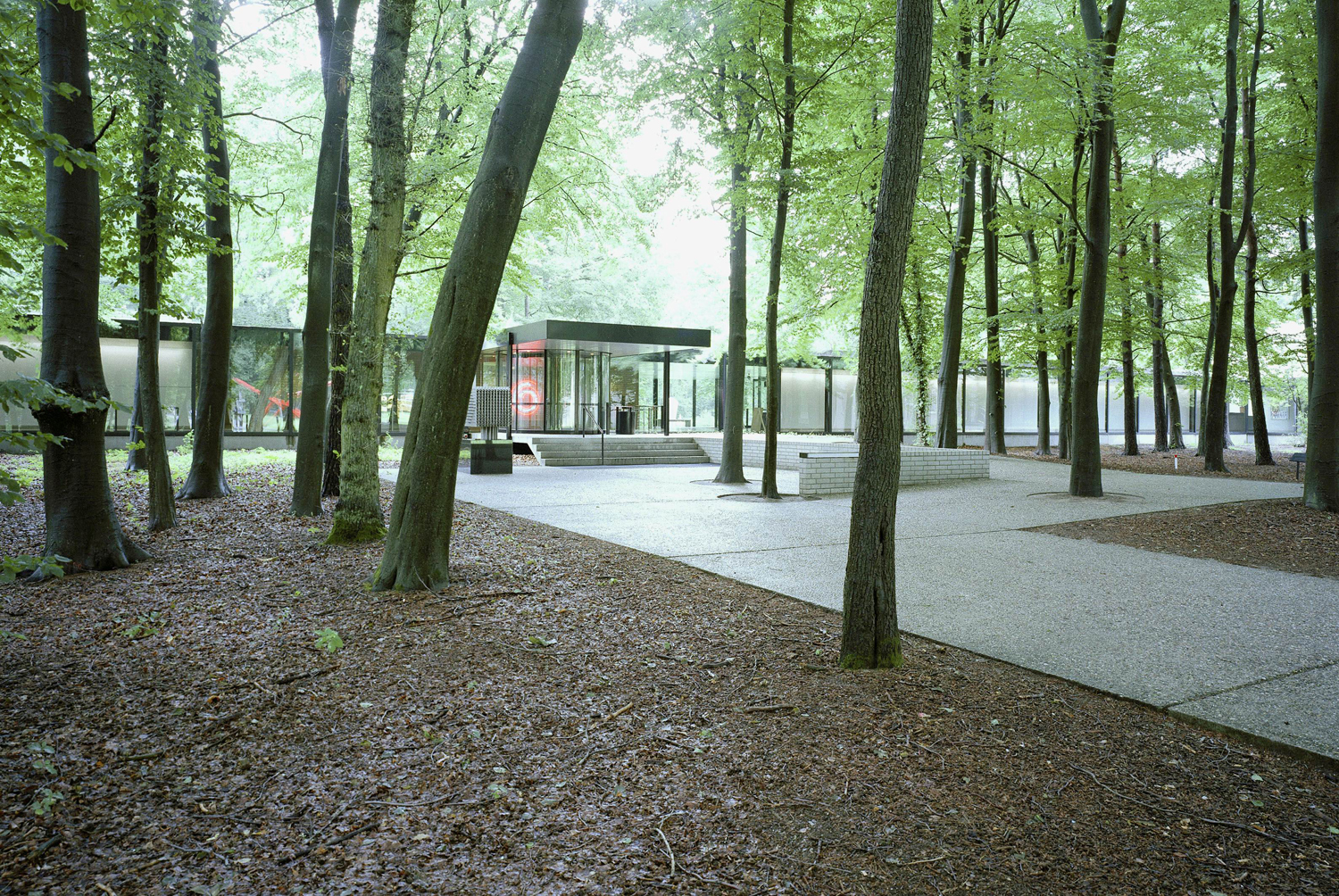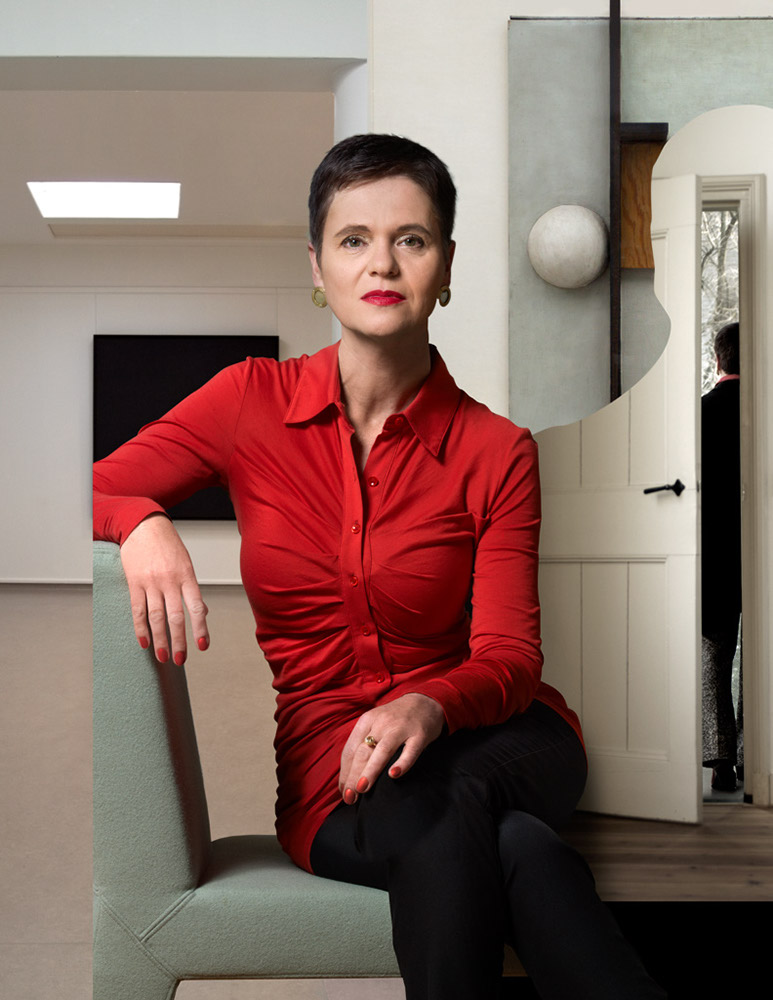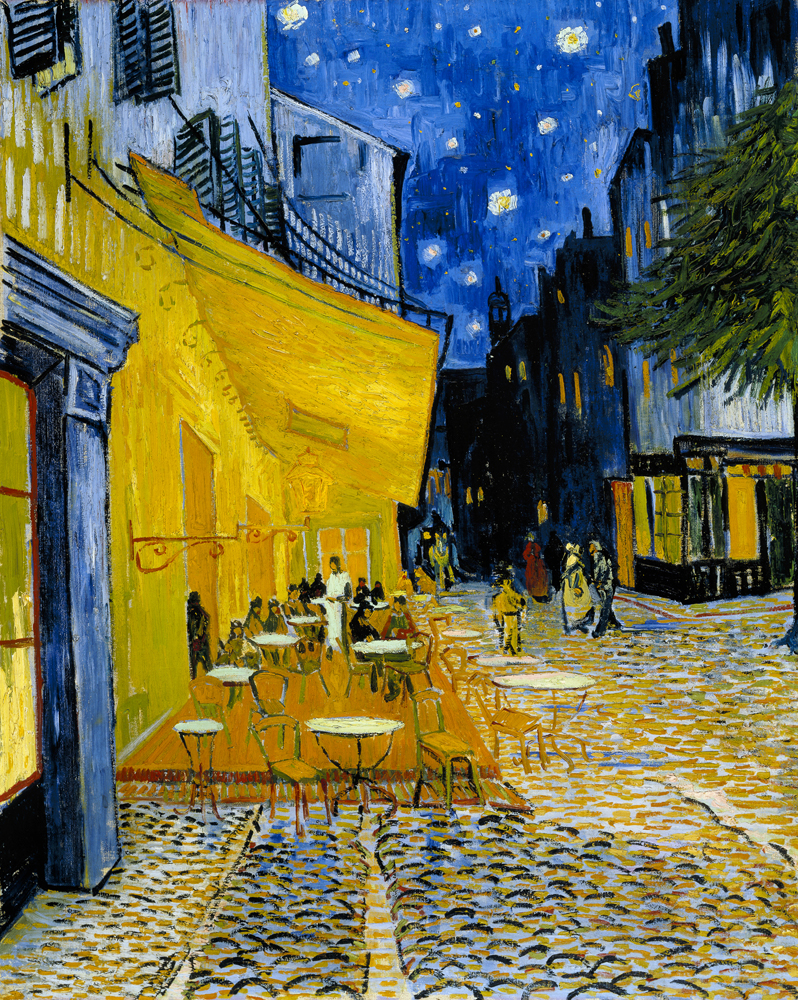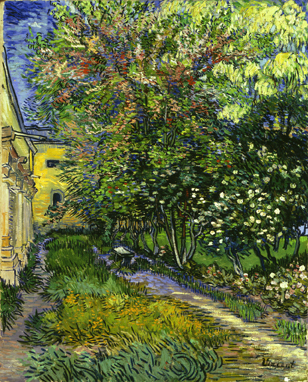This Saturday is a big day for Vincent Van Gogh geeks like me. For this day is the 160th anniversary of the birth of our beloved and misunderstood hero. But what to do when the world's largest collection of works by Van Gogh (housed fittingly at Amsterdam's Van Gogh Museum) is unavailable until early May while the building undergoes extensive renovations? The place with the world's second largest collection, of course -- the lesser known but utterly magnificent Kröller-Müller Museum, located in the middle of a National Park in Otterlo (about an hour's drive from Amsterdam).
And oh, how they are ready for us at Kröller-Müller. Their current two-part exhibit, "Vincent is Back" focuses on its massive Van Gogh collection for the first time in many years and has been met with rave reviews.

The Kröller-Müller Museum
To mark the occasion of Van Gogh's birthday and the pending wrap-up of Part I / opening of Part II of "Vincent is Back," I chatted with Kröller-Müller Director Lisette Pelsers:
Q: The title suggests that Vincent has not been on view for a while. Is that correct and if yes, why is that?
A: After a period of dispersed presentation and storage, all the world-renowned Van Gogh paintings are back together in the galleries of the Van de Velde building of the museum, which as a rule is the host of our Van Gogh Collection. Now we can present the artist again back in the center of our museum.
Q: What's the importance of Van Gogh to the collection of the Kröller-Müller Museum?
A: The works of Vincent van Gogh were central to the private collection of Helene Kröller-Müller, and when she built her museum it was only logical that the heart of it would be reserved for his works. The galleries leading up to it - as if leading to the light, one might say - displayed naturalist, realist and impressionist art works; the galleries following the earliest forms of modernism, especially cubism. Visitors today, to a large extent, can still experience this. Van Gogh in this context functions as what you might describe as a historical touchstone to the rest of the collection. Historical in the sense that the private art historical view of the collector is the main frame in this. On the other hand, as any museum that owns Van Gogh pictures will acknowledge, the importance of these works is difficult to under-estimate, because people from all over the world will seek you out to pay a visit.

Lisette Pelsers, Director, Kröller-Müller Museum
Q: What's the history behind your Van Gogh collection? How is it that your museum houses so many works by Van Gogh?
A: From the moment when Helene Kröller-Müller, under the influence and guidance of her aesthetic advisor H.P. Bremmer, decided that Van Gogh's work was the highest and purest art that could ever be experienced, she roamed dealers and auctions for an odd 20 years (from 1908-1928) to acquire a representative selection of his works, both paintings and drawings, though the paintings were at first more important. She ended up with an odd 90 paintings and 180 works on paper by the artist. This is of course next to all the other works of art she collected, among which hundreds of paintings by artists such as Daumier, Corot, Millet, Fantin-Latour, Renoir, Monet, Redon, Picasso, Mondrian, and many others..
Q: What's new in the way you are presenting your Van Gogh collection?
A: The presentation provides plenty of space for the individual works, offers various layers of information, and introduces the visitor to a new house style. Director Lisette Pelsers explains: 'With Vincent is back, the Kröller-Müller Museum marks a first important step in a new approach to the presentation of both the permanent collection and the exhibitions, in order to make these more accessible and appeal to a broader public. After all, our collection is for everyone. That was the intention of Helene Kröller-Müller and remains the intention of the Kröller-Müller Museum. Thus, our ultimate ambition is for all Dutch citizens to have visited our wonderful museum at least once and to have them return.'
Q: What distinguishes part II from part I?
A: Van Gogh's artistic career spans 10 years, the first five of which were largely situated in the Netherlands, the following five in France. Part I focused on the first half of his career, part II highlights his later works.
Q: What will happen to the Van Gogh collection after part II is finished? In other words, when the exhibition is over, how will the Van Gogh collection be integrated?
A: Van Gogh will stay in the center of the museum. However, we will integrate the 2 parts. Some of the works will no longer be on view though because they might travel and the drawings for instance are too fragile to be on permanent view.
Q: How would you describe the difference between your Van Gogh collection and the Van Gogh Museum's collection of works by Vincent van Gogh? Why should foreign visitors go all the way to Otterlo if they can see the largest collection of works by Van Gogh in Amsterdam?
A: Before 1973, when the Van Gogh Museum opened, part of that collection was on view in the Stedelijk Museum in Amsterdam. In those days it was sometimes heard that if you wanted to see as many Van Goghs as possible, go to the Stedelijk, if you want to see his best works, go to the Kröller-Müller Museum. This is not exactly true, but the KMM does keep some of Van Gogh's most beautiful pictures from periods that are less well represented in the Van Gogh Museum, such as 'Cypresses with two figures' and 'The garden of the asylum' from the early Saint-Rémy period (May-June 1889), next to iconic Arles works such as 'Café terrace at night (Place Forum)' and 'The Langlois Bridge'. The Van Gogh Museum has a broad collection with many important paintings and drawings, the KMM has a smaller but rather choice collection of works.

Terrace of a Cafe at Night (Place du Forum)
Q: What are the most famous works by Van Gogh in your collection?
A: The ones just mentioned, and also 'La Berceuse', 'Portrait of Joseph Roulin, 'Blossoming Peach Trees ('Souvenir de Mauve')' and 'The Green Vineyard', to name some of them. Not to forget, a version of 'The potato eaters'.
Q: Are there any recent discoveries related to your Van Gogh collection?
A: The KMM does not have the resources to permanently research its Van Gogh collection, but in recent time an important discovery was made regarding a large flower still life in our collection, which was de-attributed in earlier years, but found to be authentic. Thanks to new scientific research with MA-XRF technology, a hidden image underneath the still life was recognized as a painting Van Gogh described in one of his letters from Antwerp as a scene of two wrestlers, a study he worked on at the Antwerp Academy. This painting however was part of "Vincent is Back" I, and will be on loan to the Van Gogh Museum this year for their exhibition 'Van Gogh at Work.'
Q: What are the strong assets of your collection in general?
A: Strong assets are a series of masterpieces by important masters like Georges Seurat, Camille Pisarro, Fernand Léger, Piet Mondriaan and many others. On top of this, the Kröller-Müller Museum combines this wonderful collection with a sculpture garden, which is one of the biggest in Europe.

The Garden of the Asylum at St. Remy
Q: What are your future plans with the Van Gogh collection and the museum in general?
A: The Van Gogh collection will stay in the heart of our museum, surrounded by all the other famous and beloved works from the collection of Helene Kröller-Müller. This collection has frequently served as the starting point for exhibitions. One of our major projects for the nearby future will be an exhibition around one of the great masters in our the collection, Georges Seurat. This exhibition is scheduled for May - September 2014, on the occasion of the 75th anniversary of the Kröller-Müller Museum.
For more information on the Kröller-Müller Museum, visit www.kmm.nl. Facebook.com/krollermuller. Twitter.com/krollermuller.
Photo credit: Walter Herfst. Photos & Images courtesy Kröller-Müller Museum.